wrestling / Columns
The 8-Ball 01.03.13: Top 8 Reasons to Order WrestleKingdom
Welcome, ladies and gentlemen, to the first 8-Ball of 2013. My name is Ryan Byers, and, despite the New Year, I am STILL your party host for this column.
First off, I would like to thank you all for the support that you’ve shown to my version of the 8-Ball, which had its beginnings in the early part of 2012. I have enjoyed the feedback and the conversation from each of you, and I hope to continue the column well into 2013.
In order to do that, though, I have to get the first column of ’13 out of the way . . . and here it goes . . .
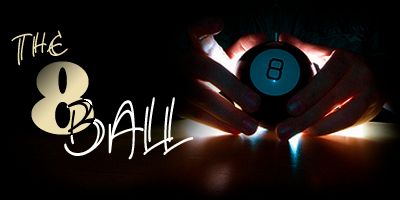
As those of you who have followed me on this site for some time know, my fandom of professional wrestling covers not just the United States but also expands into Japan. My history with Japanese professional wrestling goes back roughly fifteen years at this point. I was around for some of the peak of the late 1990s, fell out of following it when the industry as a whole collapsed in the early 2000’s, and I started to come back in 2007 and 2008 when the product became more accessible in the United States and American wrestling started to wear a little bit thin on me.
I came back at just the right time because, even though the business of Japanese professional wrestling is still nowhere near what it was at its peak, I believe that the quality of the product has entered into a bit of a new renaissance, with New Japan Pro Wrestling leading the charge.
In addition to NJPW making a huge comeback in terms of the quality of its in-ring performances and its booking, it also scored a major victory in 2012 in terms of accessibility when the company announced that it would start broadcasting all of its major shows on internet pay per view through the UStream service. The shows have done very well in terms of sales within Japan and, though there have not been that many buys in the rest of the world, viewers in the English speaking parts of the globe who have picked up the shows have almost universally raved about them.
Coming up on January 4, 2013 at 5:00 p.m. Japanese Standard Time (also known as January 4, 2013 at 3:00 a.m. Eastern Standard Time), New Japan will present its biggest show of the year, its equivalent of Wrestlemania, known as WrestleKingdom VII. For those of you who follow TNA closely, this is the same card that in recent years (but not this year) featured various TNA stars such as Kurt Angle and Jeff Hardy heading to the Tokyo Dome to do battle with Japan’s finest.
Like the other recent major shows from NJPW, WrestleKingdom will also be available on UStream worldwide, for the price of $35.00. The show is available either live or for video on demand purchase through January 11 and should provide approximately four hours of strong professional wrestling action. The link to New Japan’s UStream channel, where you can purchase the show, is right here.
I’m quite stoked for WrestleKingdom, and I think that you should be too. That’s why I’ve decided to write this column, the Top 8 Reasons to Order WrestleKingdom VII. Note that I’m writing this column in large part for people who may never have seen any Japanese wrestling whatsoever, so don’t think that you have to be a puroresu veteran in order to read beyond this line. My hope is to introduce some newbies to the product as well.
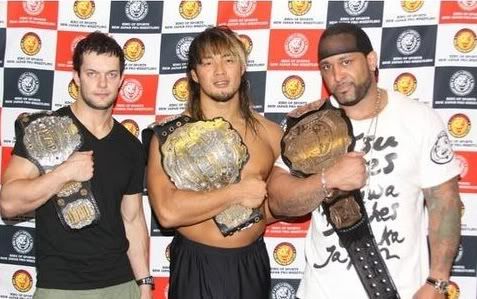
One of the things that a lot of people throw up as an objection when I first suggest that they watch some puroresu is the fact that they’re not going to understand the language that is being spoken in the commentary or in promos. I’m here to tell you that, if that’s your excuse, it’s not a valid one. As noted above, I have watched puro on and off for over a decade, and I do not now nor have I ever spoken one lick of Japanese. It’s just not necessary to understanding the product. Why? A big part of the reason is that, unlike WWE and other American promotions, the storylines between the wrestlers in Japan aren’t told over the microphone. They’re told almost exclusively in the ring, in the wrestlers’ physicality, their body language, and their facial expressions. If you’ve watched English-based wrestling for any period of time, the movements and activities in the matches should be familiar enough that you’re able to tell exactly what the point of a match is without understanding one syllable of the language. I will give you one small Japanese tip, though: When you hear the announcers shouting at the top of their lungs and stretching a word or phrase out for several seconds longer than you would expect it to be said, that’s typically the name of a wrestler’s signature move.
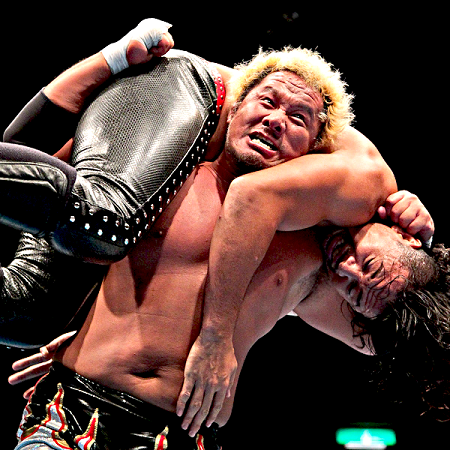
This year, in the United States, Wrestlemania prices are probably going to top out at around $60.00 in the pricier parts of the country for four hours of professional wrestling. Meanwhile, the iPPV of WrestleKingdom is going to clock in at $35.00, also for four hours of professional wrestling. Given that New Japan’s prior iPPVs (with one exception) have been of better quality than any Wrestlemania that I’ve watched in the past five years (and I typically enjoy Wrestlemania, don’t get me wrong), I would say that’s a hell of a deal. It’s an even better deal when you consider the fact that this is New Japan’s biggest show of the year, so, if the earlier shows in the year were awesome, you can only imagine that the roster will be all the more motivated to put on a helluva show. Some people might point out that $35.00 is still a heftier price tag than you would expect to pay for an iPPV from an American independent promotion, but the fact of the matter is that you’re dealing with a major league promotion here with major league quality talent and production, so it’s only natural that this would cost more than the CHIKARA’s or the ROH’s of the world. (And, again, I love me some CHIKARA and have enjoyed ROH in the past, so I’m not trying to knock them here . . . I’m just stating the truth.) At $35.00, the cost of WrestleKingdom may be the most bang for your buck that you get in professional wrestling all year long.
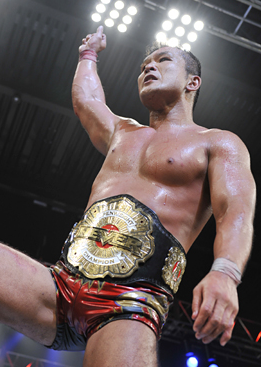
New Japan first started showing its major shows as iPPVs in August of this year. Though by all reports the number of buys that they have done overall is considered sufficient for the promotion to be very happy with the project, the fact of the matter is that these iPPVs are still very much an experiment that is in its very early stages. That’s particularly true of the broadcasts outside of Japan, as there have only been a couple of attempts in NJPW’s forty year history to market its product outside of Asia. In order to keep this quality professional wrestling and a big league alternative to WWE and TNA flowing to those of us in the United States, we’re going to have to financially support it. That goes double for you, folks who might be considering pirating the show as opposed to obtaining it through legal means. Don’t get me wrong, I certainly wouldn’t be telling you to support this product for the sake of supporting it if it was not a quality product. Supporting something just to support it is pointless if the business you’re supporting is so bad that it should be permitted to die. That’s not what we’re talking about here, though. We’re talking about a company that has been plugging along for four decades in its home country and deserves a chance to flourish in the west.
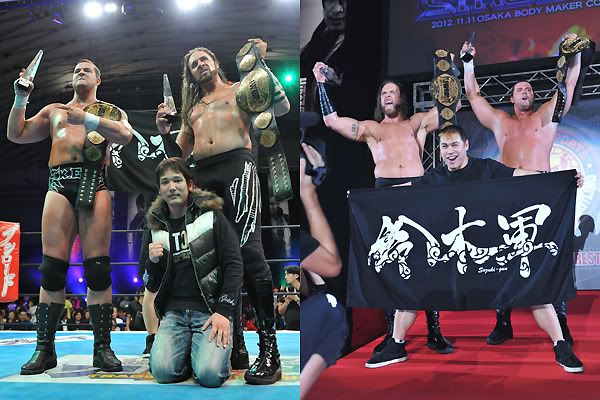
I’ve been following professional wrestling on the internet since 1998 now, and one of the things that I have heard people complain about literally since the first day that I signed on to a wrestling website is that certain wrestlers are underpushed by the companies that they’re a part of. This is particularly true in WWE, where sometimes big personalities are allowed to dominate wrestlers who are more athletically talented but may not necessarily tell the funniest jokes. Several North American wrestlers who, at various points during their careers, have been considered underpushed in the United States, are on this week’s New Japan pay per view, and they are mostly being featured in fairly prominent roles. First of all, Shelton Benjamin, who many think didn’t get a fair shake in WWE, is in a featured singles match on the card, as he faces off against Masato Tanaka (yes, the former ECW star) for the NEVER Openweight Title in what should be a great showcase of both men’s natural athleticism. Also featured is the tag team of the “Killer Elite Squad,” comprised of Davey Boy Smith, Jr. and Lance Archer. The former of these two men is D.H. Smith of WWE fame, while the latter is TNA alumnus Lance Hoyt, both of whom always appeared to have potential as rough-and-tumble big men but were never allowed to unleash it stateside. Now they are doing just that in New Japan, where they are currently the IWGP Tag Team Champions and will be defending against native Hirooki Goto and former US indy wrestler Karl Anderson, who I consider the best American talent not currently competing in WWE or TNA. Low Ki (or Kaval or Senshi, if you know only his WWE/TNA monikers) is even higher up on the card, though we’ll be talking about him in more detail in a moment. Finally, Montel Vontavious Porter – MVP – will make a quick appearance in an undercard tag team match. So, if you think any of those men didn’t get a fair shake from their prior employers, check them out here.
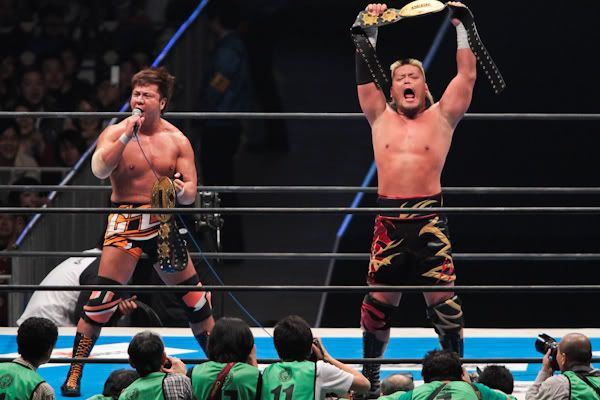
I know that there are a lot of lapsed English-speaking puroresu fans out there, people who followed the Japanese game in the 1980s and/or the 1990s but vanished in the early 2000s when the business fell off a cliff for Japanese fans. However, many of those Western Hemisphere fans still speak very fondly of the wrestling action that they watched back then. Well, if you’re one of those lapsed fans, or if you’re somebody who has always heard how great puroresu was in the 1990s but never had an opportunity to check it out, this week’s iPPV has just the nostalgia match for you. The bout sees Hiroyoshi Tenzan and Satoshi Kojima, who were up and comers in the 90s and formed what was considered one of the best tag teams in the world in 1999, going up against Keiji “The Great Muta” Muto, NJPW legend who had his biggest runs in the 1990s, and his partner Shinjiro Ohtani, who was generally considered to be one of the best junior heavyweights in New Japan during the 90s before bolting to the startup ZERO1 group in 2001. Granted, these men are probably all at least a bit past their athletic primes, but the fact of the matter is that they can all still go in the right contexts, and here they will have more motivation than they do in most matches these days. It should be quality stuff that reminds us all of the good old days. (I would be remiss if I did not note that Ohtani is a replacement for youngster Daichi Hashimoto, the son of one of Muto’s best friends in the business, Shinya Hashimoto. The younger Hashimoto broke his arm shortly after the original match was announced. Best of luck in your recovery, Daichi.)

Speaking of veterans, two more of them are set to lock horns at WrestleKingdom, this time in singles action. On one side of the ring will be Yuji Nagata, multi-time IWGP Champion and one of the guys whose performances helped hold New Japan together in its rebuilding years. On the other side of the ring will be Minoru Suzuki, a former MMA star in Pancrase who in recent years has settled into being a damned fine professional wrestler and one of the competitors in what many are calling the 2012 match of the year (but more on that later). Both men are now forty-four years of age, what you would typically call the beginning of an end of a wrestler’s useful life, but these guys have gone through an interesting evolution over the past several years that will likely allow them to last for many more years as productive members of the wrestling community. What is that transformation? They’ve both started to wrestle and carry themselves like grumpy, salty old veterans who are pissed off at the world and who are taking their frustrations in life out on their (usually) younger opponents. This year at WrestleKingdom, the grumpy old man collides with the grumpy old man, and you can rest assured that there will be a lot of snug strikes and badass looking submissions doled out. Plus, these two were also in a featured match on WrestleKingdom V two years ago, so there will likely be some interesting callbacks to that match for anybody who has seen it previously. (Hint: Go out and find and watch that match.)

As I noted above, I’ve been reading the complaints of internet wrestling fans for quite some time. In addition to the complaints about the “right” wrestlers not being pushed, there is also typically a fair amount of grousing about the inability of a major league promotion to properly book and promote a division featuring lighter weight wrestlers. These complaints mostly stemmed from the beloved WCW cruiserweight division . . . but not a lot of people realize that the WCW cruiserweight division was heavily inspired by the junior heavyweight divisions that were popular in New Japan and its overseas brethren. The NJPW junior heavyweight division of the 1990s produced some of the best straight-up in-ring action of any division of wrestlers in history, with names like Jushin Liger, El Samurai, and Wild Pegasus. Recently, a new crop of junior heavyweights has taken up the mantle, and the three top junior heavyweight performers for NJPW over the past several years are going to lock it up in a three-way dace this week. They are the aforementioned Low Ki, Kota Ibushi of the indy group DDT, and Irish wrestler Prince Fergal Devitt. These three men have traded the IWPG Junior Heavyweight Title back and forth since June 2010, with Ibushi taking on Ki, Ki taking on Devitt, and Devitt taking on Ibushi. There have been some great matches in that series, with Ibushi bringing the beautiful high flying, Ki bringing the stiff shots, and Devitt being the well-rounded glue that holds it all together. It will be interesting to see what happens when all three men are together at the same time, particularly since the three-way match is still somewhat of a novelty in Japan.
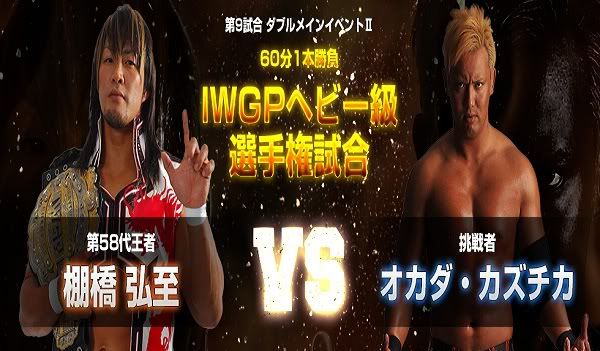
And here it is. The main event. In one corner, the multi-time and current IWPG Champion, Hiroshi Tanahashi. In the other corner, the former champion and cocky upstart, Kazuchika Okada. In my mind, these two spent 2012 going back and forth with each other in a battle to see which one of them would wind up with the crown of best wrestler of the year. Tananhashi has been in contention for that title every year for the past several years, but Okada entered 2012 a veritable nobody, only to emerge on the other side of the calendar as one of the most respected and over professional wrestlers on the face of the planet. These two have wrestled each other before, with Okada taking the IWPG Title off of Tanahashi in their first encounter on February 12 and Tananhashi regaining it on June 16. Both of those matches were stellar, and, standing on their own, they would strongly justify plunking down your money to see the rubber match. However, that series of matches isn’t the only reason that Tanahashi and Okada have been so highly regarded in 2012. They have both also had stellar defenses against other opponents, including Okada’s March 4 bout against Testsuya Naito, which I ran around calling a surefire match of the year for months, only to have it be supplanted on October 8, when Tanahashi defended the championship against Minoru Suzuki, in a match that not only replaced Naito/Okada as my MOTY but also generated such universal praise that I see it going down as an all-time classic. Now, with the challenge to outdo their past performances and put on a match worthy of the most epic show of the calendar year, Tanahashi and Okada will lock it up one more time with not just the championship but also with their reputations on the line. This is the one match that I have looked forward to more than any other in years, and I would be amazed if you are a professional wrestling fan and cannot derive some sort of entertainment from the culmination of this story.
That’s it for this week’s 8-Ball. If you can’t get enough of Ryan, follow him on Twitter here.







